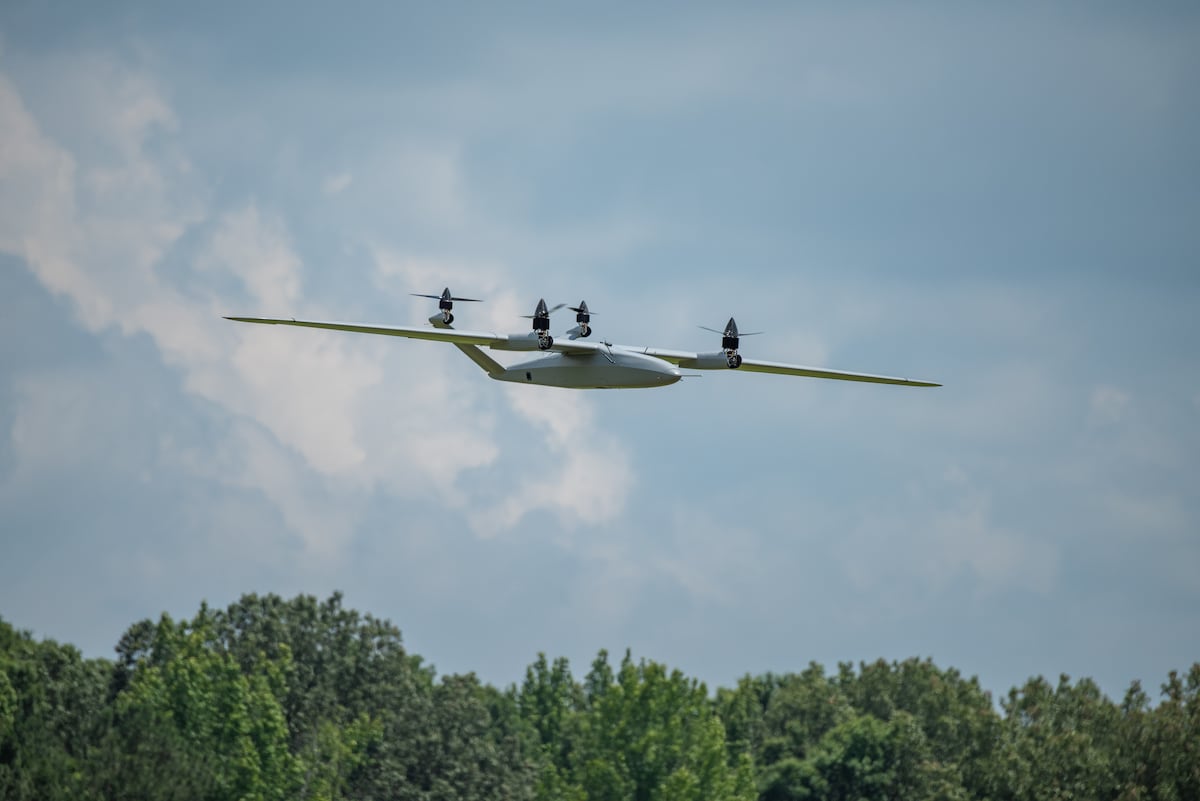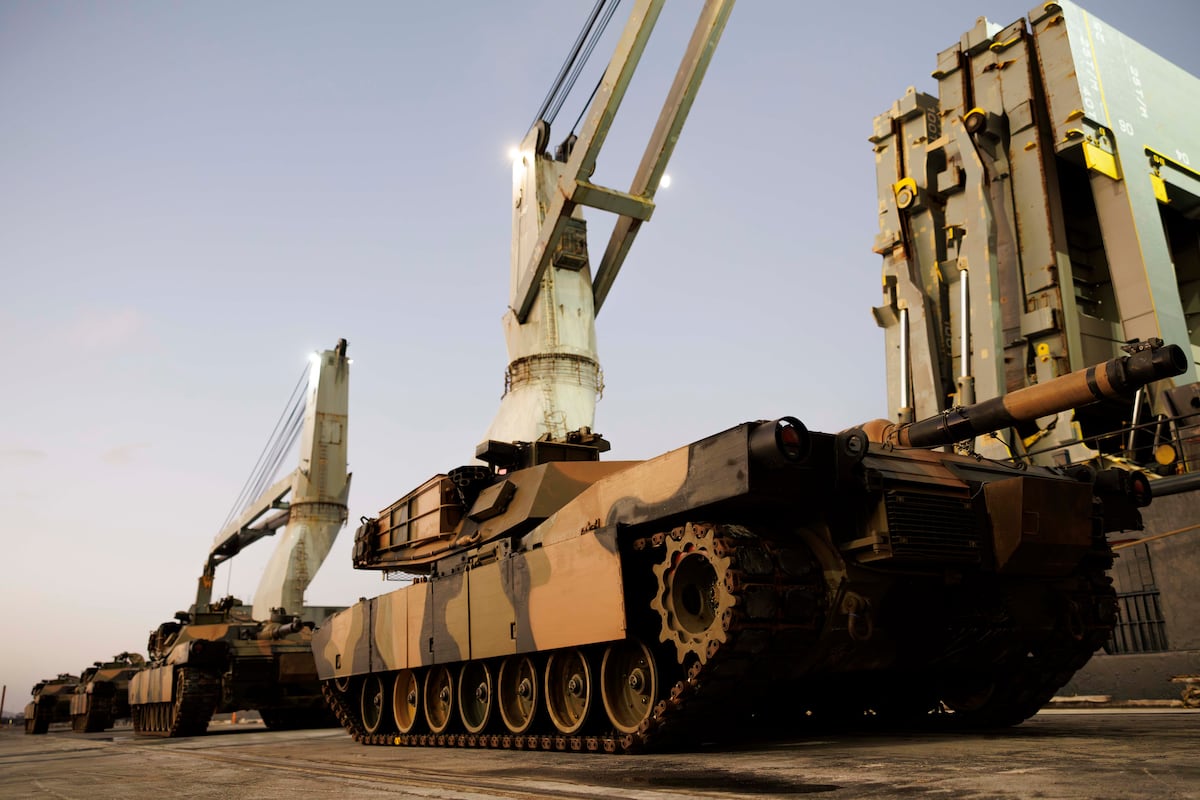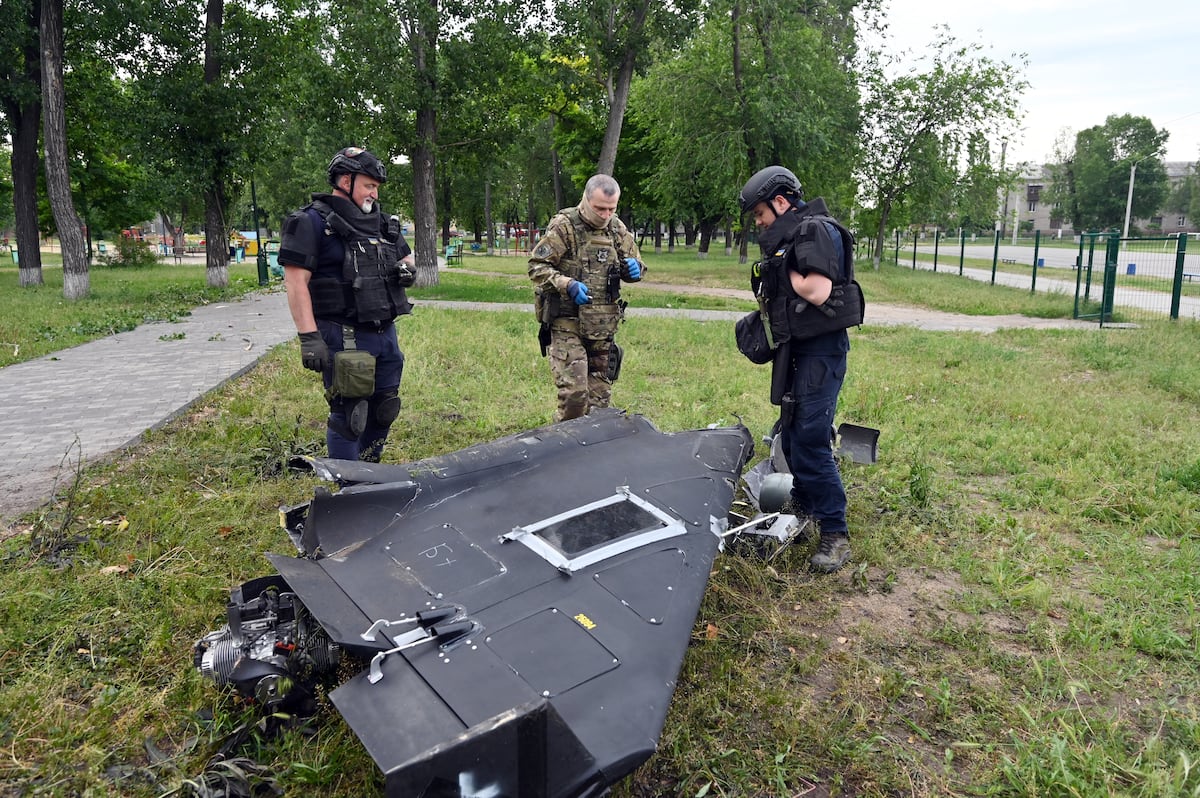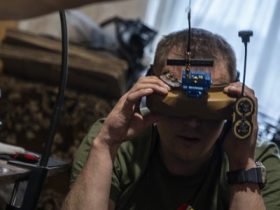After roughly seven years, the Army has decided not to continue down its current path to find and procure an unmanned aircraft that replaces its now-retired Shadow drones for Brigade Combat Teams.
While it knows what it doesn’t want, the service is still trying to figure out exactly what it does want and how to acquire capability rapidly.
“It’s not that we don’t want a Future Tactical UAS. It’s just the one that was being developed didn’t meet our needs,” Army Vice Chief of Staff Gen. James Mingus told reporters at the Army Aviation Association of America’s annual conference.
As part of a larger directive issued by Defense Secretary Pete Hegseth to make major changes to structure, formations and programs, the Army decided to cancel the FTUAS program just as two vendors had just wrapped up a competitive flight demonstration phase.
“There’s a misnomer of, ‘We’ve killed FTUAS,’” Mingus said. “We still need short, medium, long-range unmanned systems that can sense, they can see, they can extend the network, they can kill, they’re kinetic, they’re [electronic warfare], they do all those things and so we’re still going to invest in systems like that.”
The decision comes after the Army approved just one year ago the characteristics it wants in an FTUAS and awarding contracts to two teams competing to build the drone.
The long road to replace Shadow
The Army has been trying to replace its Shadow UAS fleet for years but officially retired it in early 2024. The service then looked to figure out how to possibly accelerate a fielding timetable for FTUAS, but there wasn’t enough funding available to move more quickly, then-director of Army aviation at the Pentagon, Maj. Gen. Wally Rugen, said last year at AAAA.
The service invested money in fiscal 2025 to buy prototypes from both Griffon Aerospace and Textron and fly them over the next few years.
“The goodness about FTUAS is going to be the plug-and-play things … that you can put on it,” Lt. Gen. Karl Gringrich, Army G-8, said in an interview a year ago.
“The ability to put on a network extension, the ability to put a, potentially in the future, lethal payload. [Electro-Optical Infrared] sensors, [electronic warfare],” he listed.
Among key characteristics for the FTUAS, in addition to rapid capability insertions, the Army wants the aircraft to be runway independent, have on-the-move command-and-control and soldier-led field level maintenance.
The Army began considering requirements for a replacement for its Textron-made Shadow drone in 2018. By 2019, it had narrowed the pool of competitors to a Martin UAV-Northrop Grumman team, Textron Systems, L3Harris Technologies and Arcturus UAV. Aerovironment purchased Arcturus in 2021, while Shield AI bought Martin UAV in the same year.
The service evaluated the four drone offerings with operational units over the period of a year, culminating in a spring 2021 rodeo at Fort Benning, Georgia. The Army awarded Aerovironment an $8 million contract in August 2022 to provide the Jump 20 UAS as an interim FTUAS capability for a single brigade.
The Army had planned to field FTUAS to the first unit equipped in 2026.
Technology worth saving
The service’s project officer for UAS was asked to put together three courses of action within 30 days to the Army’s acquisition branch to stop current FTUAS development, Col. Danielle Medaglia, the project manager for Army UAS, said at AAAA. Those were due May 14.
“Right now the plan is we’re going to continue the developmental tests. We’re doing that with both vendors and, from there, the Army is going to make a decision whether we want to just provide them the jump start [to] the Brigade [directed requirement] and they’re also, hey, we have to transfer that technology,” Medaglia said.
“There is some new technology on that, in that Group 3 space that both vendors brought to bear and there’s no way the Army would lose out on that,” she added, “so how we transfer that technology is a really, really big deal.”
While Griffon did not participate in the first round of FTUAS demonstrations when the Army opened the competition back up to industry again in 2023, the company had already been quietly working on its solution, keeping in mind the size and modularity the Army really needed to accommodate the sensors and effects it wants on such a platform.
“We really view ourselves as building aerial pickup trucks because in the world of UAS, the actual air vehicle should be the thing you think about the least while conducting a mission,” Jordan French, Griffon program manager for tactical UAS, told Defense News in a recent interview.
“The air vehicle is certainly the most critical piece because if you don’t have it, you can’t do the mission,” he added. “That being said, operators must have complete confidence in the air vehicle so they can stay focused on the mission and the other critical components of the UAS that apply effects and situational awareness.”
Griffon has focused deeply on its modular open-system architecture and its interfaces, so in the instance a customer wants something, whatever it is, it’s essentially plug-and-play, French explained.
The technology of the airframe also departs from the typical hybrid quadcopter or tail-sitter platform that’s often seen among Group 3-sized UAS, which weigh less than 1,320 pounds.
“We took a complete clean sheet approach,” French said.
The company focused on developing a system that used a series hybrid, combining an internal combustion engine with an electric motor. The aircraft also features four tiltrotors.
“The powerful thing about our tiltrotors is the ability to thrust vector our propulsion forces,” French said. “So instead of like a quad copter having to rely on just RPM to yaw or pitch and roll the aircraft, you can actually keep the wings level and use dynamic thrust vectoring to maneuver the aircraft in hover and through transitions to forward flight.”
The series-hybrid capability also allows the UAS to operate silently, which is a departure from the RQ-7b Shadow engine’s lawn-mower-like acoustic signature.
“At only a few 100 yards away, Valiant is virtually silent,” French said.
Should the Army decide to buy more systems at a larger scale, “Griffon has completed all of the major milestones of the current rapid prototyping effort and is already in production for other customers and ready to begin production for FTUAS,” French said.
Griffon builds several hundred Group 3 aircraft for various customers a month, he noted.
Textron, the other team competing in the most recent flight demonstrations, declined to provide comment to Defense News.
Possible paths
In October last year, the Army chief of staff signed a directed requirement to get a brigade-level UAS capability out to six Transformation in Contact Brigades by the end of calendar year 2025, according to Chief Warrant Officer 5 Micah Amman, who is the requirements development lead for FTUAS within the Army’s cross-functional team for Future Vertical Lift.
“We still believe that a UAS at the Brigade level is still necessary in order to set the conditions for the rest of the Brigade,” Amman said.
To find options, the Army cast a wide net and asked industry to show them how they are filling capability needs with technology.
“We need a brigade-level capability and, I think, this is just me, we don’t know yet. We’re still trying to learn some of these things,” Amman said.
“I think we absolutely need to be defined by formations, by [combatant commands]. So what I need at sea level might be different than what I need in the mountains, what I need in cold weather might be different than what I need in hot weather from a material standpoint,” Amman said, adding, “How do I need the system to perform, to carry those effects?
“And the effects that I need based on the scenario might be different as well, like where my [electro-optic infrared radar] might need to be different based on what the joint or multinational force is bringing to the fight, where the radios or other types of effects might be important to the brigade.”
The only document that still exists unchanged for Brigade-level UAS is the Army chief’s directed requirement, said Col. Nick Ryan, the Army capability manager for UAS within the service‘s Capabilities Development and Integration Directorate.
“We haven’t been told to relook that, to reevaluate that, to revise that. That is what is approved and that is what is out there right now and if we had funding today that is what we would go with,” he said.
Jen Judson is an award-winning journalist covering land warfare for Defense News. She has also worked for Politico and Inside Defense. She holds a Master of Science degree in journalism from Boston University and a Bachelor of Arts degree from Kenyon College.
Read the full article here








Leave a Reply